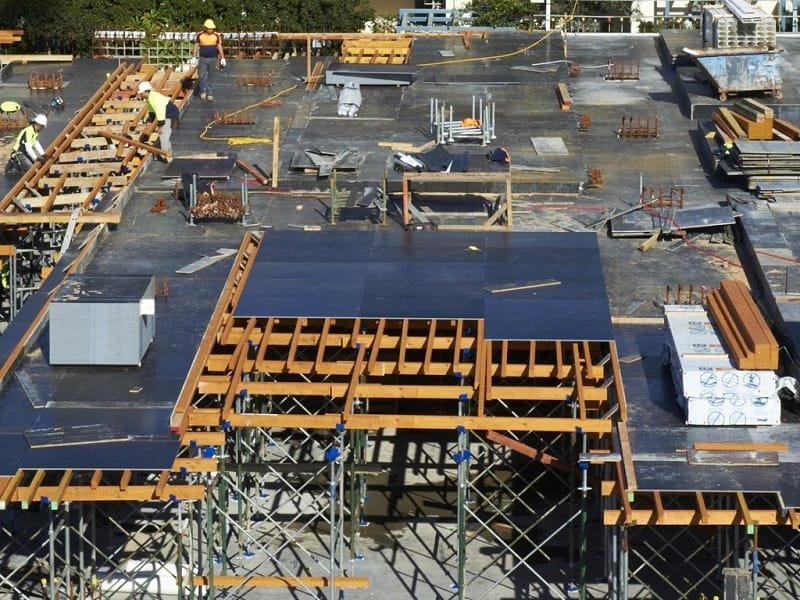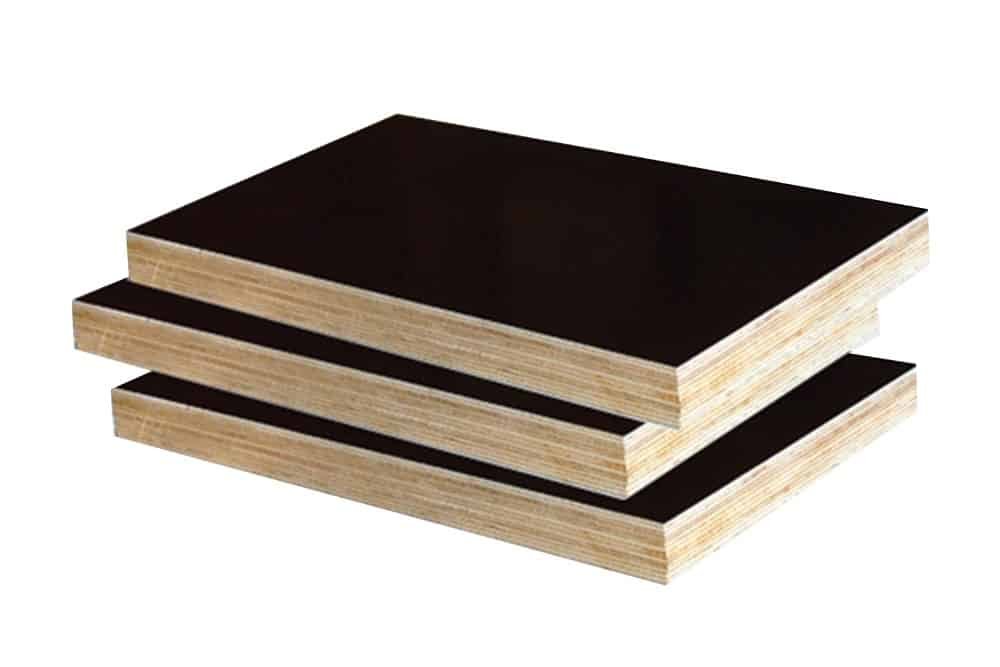Introduction
Building strong foundations is crucial in the construction industry, and one of the essential elements of achieving that is using plywood formwork.
Plywood formwork is a temporary mould or framework made of plywood sheets used to provides support for wet concrete until the concrete sets in the right shape and form and becomes strong enough to stand on its own.
Whether you are a builder, architect, engineer, or just curious about plywood formwork, this guide is for you. This comprehensive guide aims to provide readers with an in-depth understanding of plywood formwork, its importance, and its purpose in construction. With the proper knowledge and understanding, you can build solid foundations and structures that will stand the test of time.

Types of Plywood Formwork
There are many types of plywood formwork on the market, each with unique features, benefits, and application scenarios.
Next, we will introduce a few of the more common types of plywood formwork:
Film-faced Plywood formwork
Film-faced plywood is a type of plywood that has a smooth and waterproof surface. It is made by bonding phenolic resin to the plywood, which gives it its waterproof properties. This makes it very popular in extreme weather or watery areas.
HDO plywood formwork
HDO plywood formwork, on the other hand, is made by bonding a layer of high-density overlay (HDO) to the plywood. It has a smooth and uniform surface and can be used as a panel for any formwork system. HDO plywood formwork is also highly resistant to wear and tear, making it a popular choice.
MDO plywood formwork
Finally, MDO plywood formwork is made by bonding a layer of medium density overlay (MDO) to plywood. This type of plywood formwork is mostly used as a coating surface and is not commonly used for concrete forming.

Advantages of Plywood Formwork
- Durability and longevity
Plywood formwork is known for its strength and durability. It can withstand heavy loads, pressure, and extreme weather conditions. It is also resistant to water, fire, and termites, which increases its lifespan. Unlike traditional formwork made of wood, plywood formwork does not warp or shrink, making it an ideal choice for long-term construction projects.
- Reusability and cost-effectiveness
Plywood formwork is reusable, which makes it cost-effective in the long run. It can be used multiple times before it needs replacement, reducing construction costs significantly. In addition, plywood formwork is light weight, easy to handle, quick to install and saves labor costs, improved construction speed, and reduced environmental impact.
- Flexibility and versatility
Plywood formwork can be easily cut, drilled and shaped to fit any construction requirements. Different sizes and thicknesses of plywood are available for a wide range of construction projects. Plywood formwork is also compatible with different types of concrete and can be used for flat and curved surfaces.
- Sustainability
Plywood formwork is made from renewable resources and is recyclable. It is a more sustainable alternative to traditional concrete, steel, or wood formwork. It also reduces waste on construction sites and helps reduce carbon footprint.
Applications of Plywood Formwork
Plywood is a versatile material that can be used for various applications, including building foundations and walls, structural and architectural elements, bridges, and other infrastructure projects.
A. Building foundations and walls
Plywood formwork is commonly used in the construction of building foundations and walls. It is an excellent material for forming concrete structures, as it is solid and durable yet lightweight and easy to work with. Plywood formwork can be cut to size and easily assembled on-site, making it a popular choice for builders and contractors. It is also cost-effective and can be reused multiple times, making it an environmentally friendly option.

B. Structural and architectural elements
Plywood formwork is also used to construct structural and architectural features such as columns, beams, and slabs. Its flexibility and strength make it ideal for creating complex shapes and designs.
Plywood formwork is often used with steel or other reinforcement materials to create a strong and durable structure. Its smooth surface also makes creating a high-quality finish on the final product easy.


C. Bridges and other infrastructure projects
Plywood formwork is also commonly used to construct bridges and other infrastructure projects. It is ideal for creating the formwork necessary to pour concrete into the desired shape and size.
Plywood formwork can create curved or angled structures, making it a popular choice for bridges and other complex systems. It is also durable enough to withstand the harsh conditions of outdoor construction sites.
Conclusion
Plywood formwork is an essential construction tool with numerous benefits, including durability, versatility, and cost-effectiveness. As discussed in this comprehensive guide, plywood formwork is popular in the construction industry due to its ease of use and ability to create high-quality, precise concrete structures.
However, it is essential to consider the specific project requirements and select the appropriate grade and thickness of plywood to ensure the best results. Also, proper care and maintenance of plywood formwork can increase lifespan and contribute to a safer working environment.
With the knowledge gained from this guide, we encourage you to confidently incorporate plywood formwork in your construction projects and experience its many benefits.
Contact us now to get high-quality plywood formwork and build strong foundations for your buildings.






